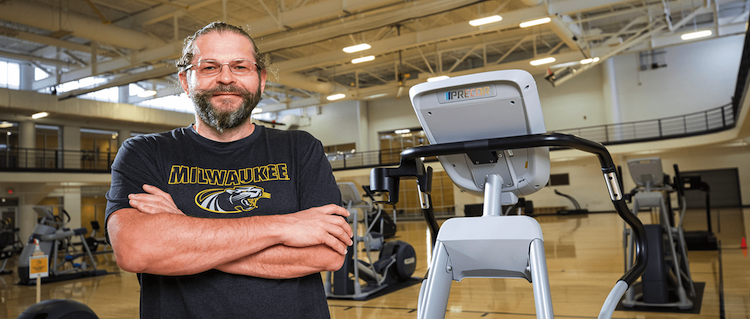When UWM temporarily shuttered buildings in spring 2020 due to the COVID-19 pandemic, one team of researchers began their groundbreaking work on the empty campus.
That team has now completed their project, funded in April 2020 by a $198,326 National Science Foundation COVID-19 RAPID grant: they have developed an easily applied, spray-on coating that repels and deactivates COVID-19 droplets that land on surfaces.
The coating is called XPAC and it could improve our nation’s preparedness for future waves of COVID and other airborne pathogens, adding a way to break a virus’s chain of transmission, said Konstantin Sobolev, principal investigator and professor of civil and environmental engineering in UWM’s College of Engineering & Applied Science.
In addition to Sobolev, the XPAC research team consisted of Nikolai Kouklin, co-prinicipal investigator and professor, electrical engineering; Michael Nosonovsky, co-principal investigator and associate professor, mechanical engineering, and David Frick, professor, chemistry/biochemical.
The team was assisted by engineering doctoral student Filip Zemajtis, who recently wrote and successfully defended a dissertation on XPAC coatings.
XPAC’s 3 key features
XPAC can be applied to a variety of surfaces—including metals, concrete, ceramics, glass and wood—to help prevent the transmission of viral, bacterial, and other pathogens for a period of time ranging from several months to several years.
It offers three features: it is superhydrophobic, meaning contaminants sitting on top of its surface will wash away easily; it is photocatalytic –in the presence of light, it spurs pollutants to decompose; finally, it is anticorrosive and will slow deterioration of metals to which it is applied.
UWM’s results comes just as a new study, published in The Lancet Microbe, confirmed earlier studies that the SARS-CoV-2 virus can be spread by contaminated hands and surfaces. In addition, data obtained during the COVID-19 pandemic will provide a fast track to scale-up manufacturing and widespread deployment of the anti-viral coatings.
During their research, the team worked with NSF I-Corps and interviewed dozens of industry leaders to gauge potential markets. Sobolev notes that XPAC could find its place within retail, food and manufacturing industries.
A March 2021 UWM Report story—Spraying away the COVID-19 virus—documents the beginning of this research.
